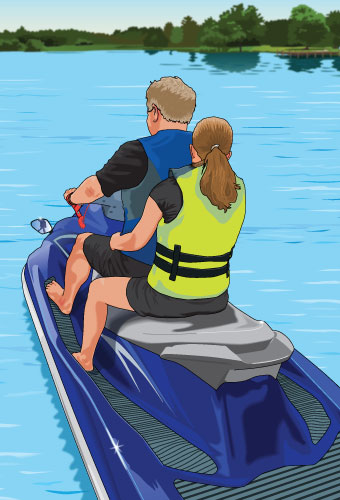PWC Safety Practices
Here are some of the safe PWC practices.
- Regulations concerning PWC can vary from state to state.
- A PWC is very maneuverable and responsive to slight turns of the steering control. At high speeds, a quick turn can make the PWC unstable, causing the operator and passengers to fall off. This is why most states require that everyone on board a PWC wear a PFD.
- Any passenger on a PWC should be able to hold on securely to the person in front of them or to the handholds, while keeping both feet firmly on the footrests. Children who are too small to be able to do this should not ride.
- A passenger on a PWC should never be seated in front of the operator.
- Keep hands, feet, loose clothing, and hair away from the pump intake area. Before cleaning debris from the pump intake, be sure to shut off the engine.
- The jet of water exiting the steering nozzle at the rear of the PWC can cause severe internal injuries. Anyone riding on a PWC should wear a wetsuit or other clothing that provides similar protection. Also, keep everyone clear of the steering nozzle unless the PWC is shut off.
- Never exceed the manufacturer’s recommended capacity for your PWC.
- Know your limits, and ride according to your abilities.

